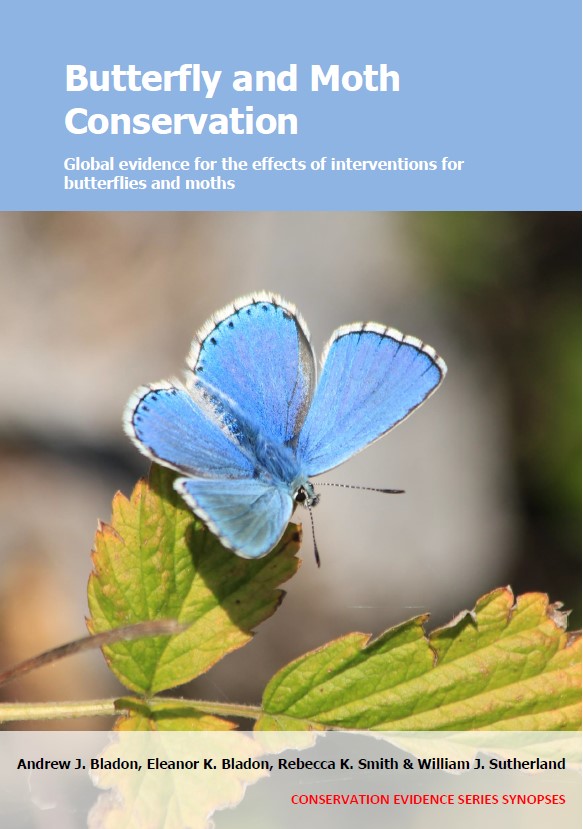Retain connectivity between habitat patches
-
Overall effectiveness category Awaiting assessment
-
Number of studies: 3
View assessment score
Hide assessment score
How is the evidence assessed?
-
Effectiveness
not assessed -
Certainty
not assessed -
Harms
not assessed
Study locations
Supporting evidence from individual studies
A replicated, controlled study in 1997 in three pine plantations in South Carolina, USA (Haddad 2000) found that the number of common buckeye Junonia coenia which colonized habitat patches when released from suitable habitat corridors did not change with distance from the patch, but the number which reached habitat patches when released from unsuitable habitat was lower at greater distances. When released in a habitat corridor 128–192 m from a suitable habitat patch, the number of common buckeyes which colonized the patch (1.6 individuals/point) was similar to the number which colonized when released 16–64 m from a patch (1.5 individuals/point). However, when released in unsuitable forest, the number of butterflies which colonized the patch from 128–192 m (0.8 individuals/point) was lower than from 16–64 m (2.5 individuals/point). In 1994–1995, across three plantations, 13 open patches (128 × 128 m, 256 or 384 m apart) were created by felling trees. Some patches were connected to others by open corridors (32 m wide). In 1997, butterflies were collected >5 km from the experimental patches, marked with a unique code, and released along transects at 16, 32, 64, 128 or 192 m from a patch. Ten transects were along corridors and 10 were within forest (192-m points occurred on only 12 transects). Four butterflies were released from every location within a single plantation on one day in June and one day in July. For four days following releases, marked butterflies were recorded daily by walking eight 128-m transects (16 m apart) across each patch.
Study and other actions testedA replicated, site comparison study in 1998–1999 on 114 wet heathland sites in the Netherlands (WallisDeVries 2004) found that well connected, lower quality habitat patches were more likely to retain Alcon large blue Maculinea alcon populations than less well connected lower quality patches, but connectivity did not affect occupancy of high quality patches. Alcon large blue were more likely to be found in low quality patches if they were well connected to other patches, but connectivity did not affect occupancy of higher quality patches (data presented as model results). A total of 114 wet heathland sites in the Netherlands where Alcon large blue was known to have occurred since 1990 were selected. From mid-July–early September 1998–1999, the size of each habitat patch, area of gentian Gentiana pneumonanthe, and number of reproductive gentians were recorded as measures of patch quality. In each of three 10 × 10 m plots/site, all gentians were counted, 15-minute searches were conducted for host ant Myrmica spp. nests (also for patch quality), and Alcon large blue eggs were counted to determine butterfly presence.
Study and other actions testedA replicated, paired, site comparison study in 2012–2015 in 36 clearcut forest patches in eastern Estonia (Viljur & Teder 2018) found that cleared patches connected to other open areas had a similar number of butterfly species to isolated cleared patches. In clearcut patches connected to other open areas, the number of “grassland species” (9 species/patch) and “open habitat species” (13 species/patch) was not significantly different to the number in isolated clearcut patches (grassland: 8 species/patch; open habitat: 12 species/patch). Eighteen pairs of clearcut forest patches of similar age (2–10 years since clearcutting) and size (0.3–2.5 ha) were selected. Paired patches were 150–4,720 m apart. Within each pair, one patch was directly connected to a network of open corridors (wide road verges and power line rights-of-way), and one patch was completely isolated by a belt of forest. From June–July 2012–2015, each patch was searched three times for butterflies (30 minutes/ha) within one or two consecutive years. Paired patches were surveyed consecutively. Butterflies were classified as “grassland species” for which semi-natural grasslands are their primary habitat, “open habitat species” which included the grassland species and other species which use a wider range of open habitat, and “forest species” which live mainly in woodland.
Study and other actions tested
Where has this evidence come from?
List of journals searched by synopsis
All the journals searched for all synopses
This Action forms part of the Action Synopsis:
Butterfly and Moth Conservation
Butterfly and Moth Conservation - Published 2023
Butterfly and Moth Synopsis





)_2023.JPG)














